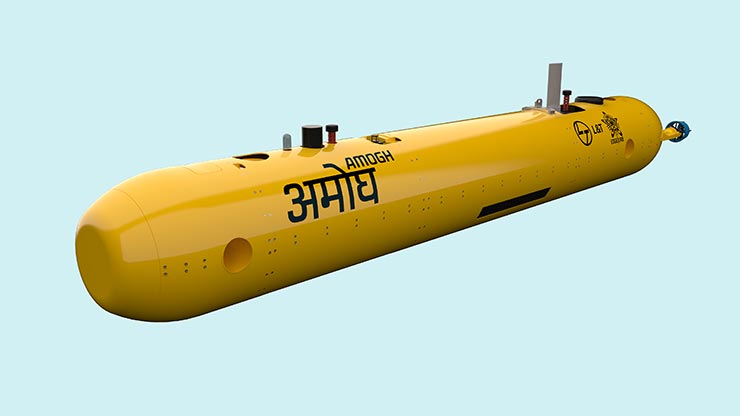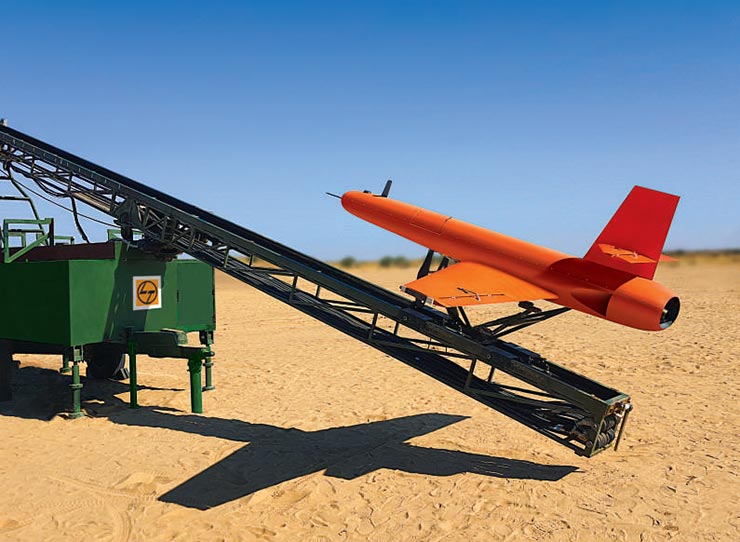
The theatre of war has evolved over time into a complex, multilayered play of technology and counter technology. However, one thing has remained constant – a good strategy is still the difference between victory and defeat.
Military strategy has been based on tangibles like location, people and machines as well as intangibles like psychology, season and time. With the advent of technology and the pace of its change as we see today, the complexity of tangibles and intangibles in battle has only increased exponentially.
The recent Nagorno‐Karabakh conflict between Azerbaijan and Armenia is a case in point. Most experts opine that it was the deployment of modern warfare that gave Azerbaijan an edge over the more dated tactics of Armenia. Azerbaijan drones carried out reconnaissance to relay accurate target coordinates to the artillery while close air support was provided by suicide drones that carried out precision strikes on the Armenian targets. In parallel, social media and misinformation propaganda was carried out, thus incorporating the new front of Information Warfare. The conflict demonstrated how modern technology can make even low‐level conflicts more lethal.
The father of Western modern strategic studies, Carl von Clausewitz, defined military strategy as “the employment of battles to gain the end of war.” In the modern times most of battles are fought in the realm of data and information and can decide the outcome of a battle before it reaches the actual field. If war be the deployment of people, equipment and information, then let us see how these components have evolved to make the planning for modern warfare more complex.
People are both the cause and end objective of warfare. Wars are fought by them and for them, mainly as tools of policy and politics. NATO’s definition of strategy is “presenting the manner in which military power should be developed and applied to achieve national objectives or those of a group of nations.”
With more focus on the humanitarian wars post Second World War, the preservation of human life – not only of one’s own soldiers but also of innocent civilians on the other side has become the utmost priority. With the definition of enemy changing from the well‐defined soldier of enemy state to group of terrorists, with no defined nationality, nestled in civilian population, it has become more difficult to prevent collateral loss of life. Hence the need for weapons to be more accurate, the need for identification of targets to be more precise and the need for information to be more reliable. All this means a lot of data and there is a very real danger of the operator getting overwhelmed while make crucial decisions. The necessity of processing the data to provide the operator with just enough information to make the right decisions cannot be overemphasized.
With regard to equipment – platforms, weapon systems and sensors – all are getting oriented towards being more lethal and at the same time more precise. Managed and operated electronically, they are able to talk to each other and to the central command to give a more coordinated control to the operator. The introduction of unmanned systems has changed the way wars are fought and won. Initially, they were meant to take over the most dangerous of tasks to minimize risks to human life, but in the bargain they have also turned out to be stealthier, more economical, more flexible and an element of surprise in many a battle in recent times. When teamed with the conventional manned platforms they can act as force enhancers and multipliers. When equipped with artificial intelligence they can act as an independent arm of offence or defence.
The most widespread change, and one that is intertwined with all the advances in the sphere of men and equipment, is in the arena of information. It can be the strongest and yet the most vulnerable front of modern warfare. Systematic collection and processing of data is important to ensure execution of strategy as envisaged. At the same time if left unprotected can lose you the battle even before it is fought. Communication, operation, coordination, artificial intelligence, maintenance, there is not one field of war left untouched by the boon and bane of data gathering and processing. The more it is used the more effective you are if managed properly and more vulnerable you are if mismanaged.
Moreover, this evolution in connectivity has taken the war from the physical reality of a battlefield to the unseen but virtual reality of cyberspace. The vital areas and vital points of a country – be it military and nuclear installations, power plants or oil refineries – are all vulnerable to a remote attack from far seated hacker. These attacks can jeopardise the very existence of a nation without a single weapon being fired. So, information security and cyber‐security now form the crux of national security, whether on the battlefield or off it.

So coming to military strategy – for modern warfare, military strategy needs to dovetail all these complex factors seamlessly to become effective. A coherent strategy would ensure optimal use of information at every step of decision making, protection of data at every step and predict how decisions at each step would affect the overall outcome. It would be a cluster of various multilayered processes at each level – individual soldier, systems, platforms, units, commands – leading to an effective overarching strategy at the national level. The decision makers will be able to see how each layer affects the others and will be able to provide risk mitigation at every level while ensuring the most synchronized use of available resources.
A coherent national strategy, as envisioned in the newly defined combined theatre commands, encompassing all the three forces, their men, material and information, will also help in streamlining the process of procurement vis‐a‐vis piecemeal procurement done by different branches of the military according to their individual needs. The needs of armed forces would be better defined and the defence industry would be in a better position to anticipate and apply their efforts and resources to meeting these needs. This would shorten the lead‐time for procurement and result in better products for the armed forces leading to a better utilization of the country’s defence budget.
A leading private sector defence company, L&T has been in the business of providing cutting edge equipment and technology solutions to the Indian armed forces for more than three decades. With an eye on the changing war theatre, this product basket is now enhanced with unmanned aerial vehicles, underwater vehicles, surface vehicles and ground vehicles for different military applications. The company can provide artificial intelligence based predictive maintenance to reduce the down‐time of platforms and encrypted communication systems to secure our data links.
L&T’s current product profile in this segment include Adamya ‐ a torpedo‐form‐factor AUV of high depth rating, Amogh ‐ a Deep‐water Survey Class AUV, a small modular AUV Maya, underwater acoustic targets and a highly manoeuvrable expendable aerial target besides a range of bots and unmanned ground vehicles. The in‐house developed Vehicle Control Unit (VCU) forms the core part of any AUV and is interfaced with sensors, communication modems, payloads, battery management systems and safety & recovery systems. Likewise, the in‐house developed Flight Control Computer can be adapted for controlling a range of UAVs. Efforts are also underway in the development of swarm solutions and adaptive sampling algorithms. These techniques enable the cooperation and coordination between vehicles, thereby reducing mission times when covering large areas of survey.
With the core strength of being system integrators and platform designers, the team at L&T have also made a keen study of the changing needs of modern forces. This knowledge has propelled us into embracing futuristic technologies like composite manufacturing, additive manufacturing, artificial Intelligence and robotics, control systems and simulation, signal processing, and swarming. Our R&D investments and efforts ensure that our products are home grown. Our through‐life support team ensures that we are able to provide assistance for the products as and when needed.
In the fast changing battlefield with risks like never before, Indian Defence Companies like L&T look to being at the forefront of providing our armed forces with all the technological muscle they need to emerge ever‐victorious!
-The writer is an ex Indian Air Force Officer currently working as Head – Unmanned Systems, L&T Defence. Views expressed are personal and do not necessarily reflect the views of Raksha Anirveda








